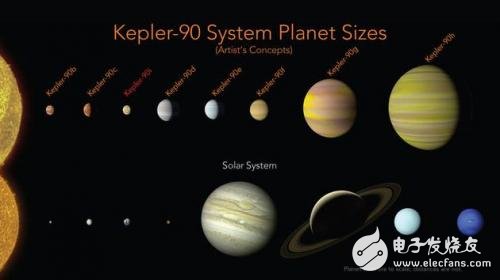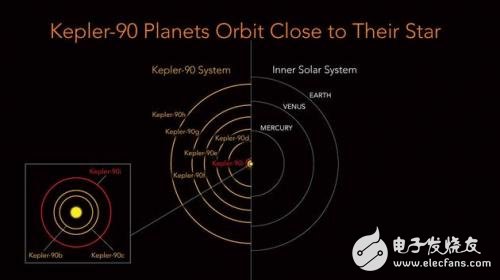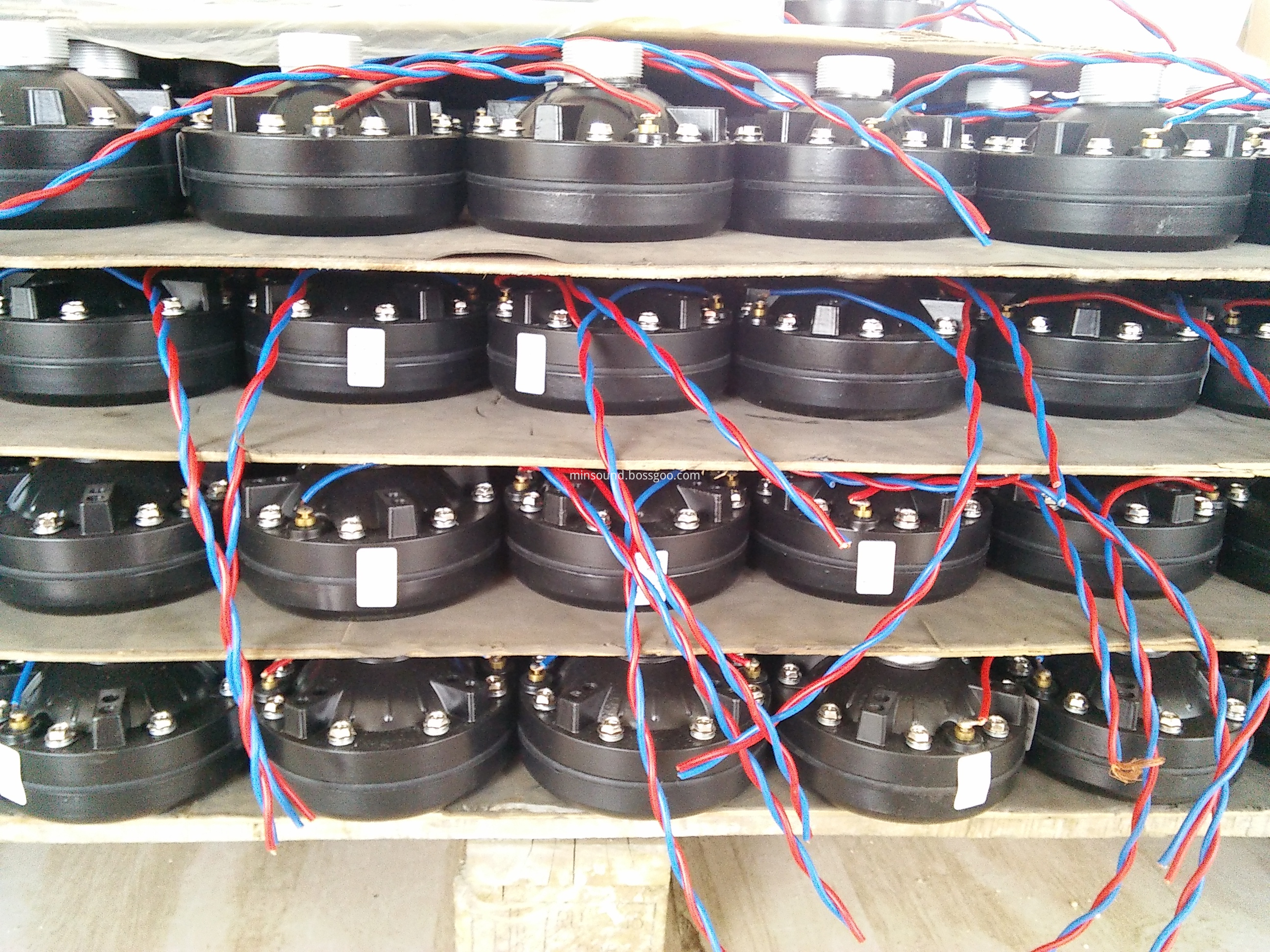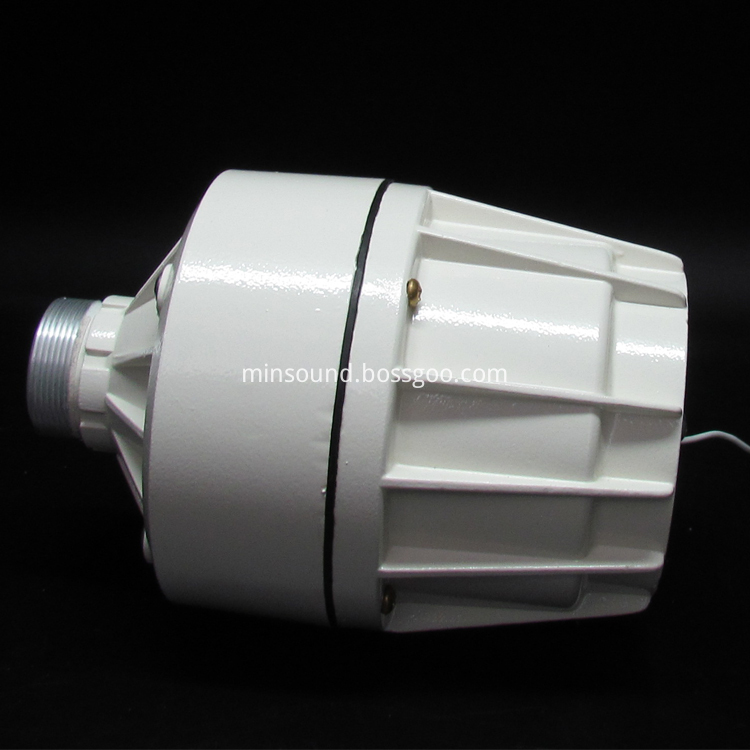In the early morning of December 15th, Beijing time, at 2:00 am Beijing time today, NASA held a press conference to officially announce the discovery of a planetary system consisting of eight planets around a star.
Until then, the solar system we lived in has been the case with the largest number of known planets around a single star, with as many as eight planets orbiting the sun. But with the announcement at the press conference today, we learned that in 2550 light years, there was the same number of planets around a star called Kepler-90.
Using data from the NASA Kepler telescope, astronomers recently discovered the eighth planet hidden in the system, allowing the number of planets in the system to reach the same level as the solar system.

With the discovery of the eighth planet, the Kepler 90 system became the first exoplanet system to reach the same level as the solar system in terms of the number of planets.

The newly discovered exoplanet is called Kepler-90i. This is a small-mass rocky planet. Because it is close to the star, the revolution period is only about 14.4 days, so it is conceivable that the surface temperature is extremely high. Another highlight of this discovery is that this achievement was achieved with Google’s machine learning technology. The essence of machine learning technology is that computers realize "self-learning" through artificial intelligence technology. In this case, the computer learned how to search for suspected exoplane signals in the massive data obtained by the Kepler telescope.
Paul Hertz, head of NASA's astrophysics department, said: "As we expected, there are still exciting new discoveries hidden in the Kepler telescope data we have analyzed before, waiting for adoption. New tools or new technologies to reveal it." He said: "This discovery shows that our data will be a precious treasure for innovative research for many years to come."
NASA's Kepler telescope records a slight decrease in the brightness of a star caused by an exoplanet passing in front of a star. This brightness drop signal allows scientists to indirectly estimate the existence of the planet and the many physical properties of the planet. In this discovery, researchers Christopher Shallue and Andrew Vanderburg trained a computer to learn how to analyze the massive stellar brightness data obtained by the Kepler telescope, and Detect abnormal signals that may suggest the presence of exoplanets. Inspired by the connection between neurons in the human brain, scientists use artificial "neural network" technology to use the powerful computing power of computer systems to automatically filter the vast amounts of data acquired by the Kepler telescope, and ultimately in the already archived data. A weak anomaly signal that was previously ignored during manual analysis was found, which proved to be the eighth planet around the star Kepler-90 in the direction of the Dragon.
In fact, before this machine learning technology has been applied to the analysis of the Kepler telescope database, the relevant research has shown its advantages in querying the subtle signals hidden in the massive data.

Although the number of planets is the same, it is clear from this orbital schematic that the Kepler 90 system has a much smaller range, almost like the mini version of the solar system. The orbit of the outermost planet has almost reached the radius of the Earth's orbit.
Compared to the Kepler 90 system, other planetary systems may be more advantageous in nurturing life. The new exoplane Kepler-90i discovered this time is about 30% larger than the Earth. It is very close to the star, and its surface temperature is estimated to be above 800K (about 526 degrees Celsius). The orbital distance of the outermost planet Kepler-90h around the star is close to the Earth.
Vanderberger is a postdoctoral fellow at NASA, from the University of Texas at Austin. He said: "The Kepler 90 system is like a mini version of the solar system. You will find that the smaller planet is on the inside and the larger planet is on the outside, but the scale of the entire planet seems to be compressed and becomes a mini version."
Salad is a senior software engineer at Google's AI artificial intelligence (Google AI) who thought of using neural network technology to analyze Kepler telescope data. He is learning that astronomy is just like other disciplines. With the continuous upgrading of data acquisition technology, he has begun to fall into the trap of being overwhelmed by massive data, and has begun to think about how to use his own computer after he has become interested in searching for extraterrestrial planets. Technical knowledge to help astronomers cope with this dilemma.
The salad said: "In my spare time, I started searching for topics such as 'Using Big Data to Search for Exoplanets' on the Internet, and then quickly noticed the Kepler telescope project and the massive public data released publicly. He said: "When there is too much data and manual analysis is difficult to parry, the use of machine learning technology comes."
The data collected by the Kepler telescope during its four-year operation contained 35,000 possible planetary signals. Scientists use automated analysis to interpret all suspected signals with an artificial check. But in the face of the weakest signals, such analysis often misses them. Salad and Vanderberg speculated that in the archived data that had been analyzed, there should be hidden planetary signals that were missed in the previous analysis.
First, they used a 15,000 signal case that had been screened before to train a computer nervous system network to learn to identify planetary occultation signals in the Kepler telescope dataset. In this training test, the accuracy rate of artificial intelligence for real exoplanet signals and false signals has reached more than 96%. Later, when the computer system had learned how to recognize the occultation signal, the research team began experimenting with the computer to re-analyze the data of 670 stars that have been found around the planet. Scientists believe that these have been proven. The stars around the planet system are the most likely to have "fish in the net", and perhaps other planetary signals have not been noticed before.
Vanderberg said: "We have found a lot of 'false positive' signals, but they may also hide the real signal. It's like a process of rummaging through various small stones to find real gems. If your sieve is better Of course, you will get more stones, but at the same time you are more likely to get gems."
Kepler-90i is not the only gem found in this neural network system. In the Kepler 80 system, they also found the sixth planet in the system. The Kepler-80g exoplanet is about the size of Earth, and it is in a resonant system with the other four planets that belong to the same planetary system. This will create an extremely stable system, similar to the previously sensational TRAPPIST-1 system with seven planets.
Related papers on these findings have been accepted by the Journal of Astronomy and will be published shortly. Salad and Vanderberg will next plan to have the AI ​​system screen all the data from the entire Kepler telescope, and the computer will screen the brightness data of more than 150,000 stars.
The Kepler telescope has acquired unprecedented amounts of data on the search for exoplanets. The Kepler telescope is currently in the process of extending its mission after more than four years of intense measurement of a region.
Jessie Dotson, a Kepler telescope project scientist at NASA's Ames Research Center, said: "These results show the long-lasting value of the Kepler project. New ways to analyze data, such as this work. Preliminary research on the use of machine learning techniques will continue to strengthen our understanding and understanding of planetary systems operating around other stars. I am very convinced that there will be more 'firsts' waiting for us in these data. Find."
Minsound offers a great range of driver units,providing accurate reproduction.high intelligibility and dependable performance in commercial sound,signaling and public address loudspeaker systems.
models are suited for Minsound reflex horns,equipped with the industry standard 1-3/8"-male tread pattern.
TD series driver units are made of Neodymium magnet for good performance.
There are line thransformers in TU series for changing output power.

Driver Units,Driver Unit With Transformer,Speaker Driver,Unit Driver,Horn Driver Units
Taixing Minsheng Electronic Co.,Ltd. , https://www.ms-speakers.com